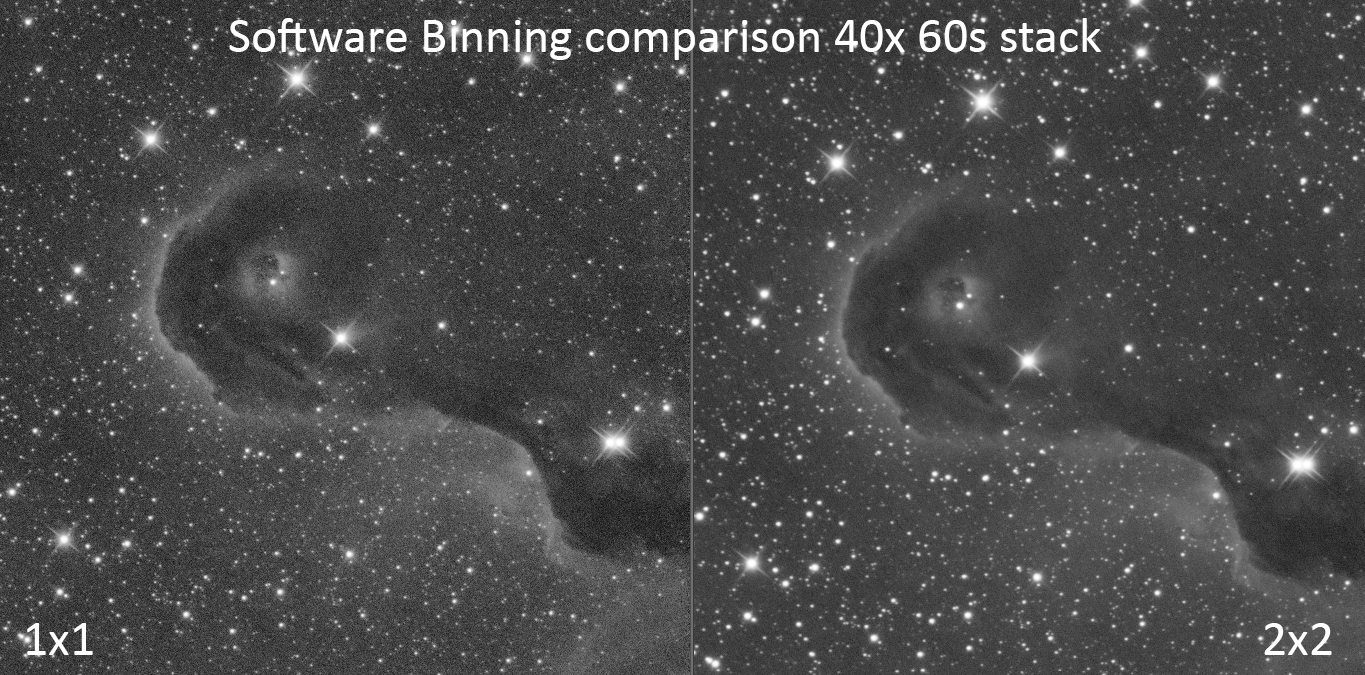Over the weekend I thought I would do a quick demo to show the results of 1x1 binning Vs 2x2 software binning. P9 was the best candidate for this.
We all want to get the highest resolution image data as possible that goes without question. But when you are imaging way beyond what the local conditions allow then is there anything that can be done to improve your data...the short answer is yes!!
Pier 9 is a great example of an over sampled setup...we have tiny pixels at just over 3.7un with a focal length of 2720mm giving us 0.28 arc sec per pixel. In truth this is in the realms of planetary imaging that require clever techniques to take advantage and unfortunately with our present tech is not suitable for Deepsky imaging. Even if we bin at 2x2 we are still under the average seeing at 0.56 arc sec per pixel, but with the seeing we have in Spain we can recover a lot of that back with deconvolution algorithms. So no advantage to having great big high res files when optically they show the same deatil as a smaller res image.
Current thought is that Software Binning is better than hardware binning with Cmos which is down to the way Cmos works, I am not going to go in to the maths but basically when hardware binned there is significant increases in noise when compared to the way CCD binning works (that said Cmos still way below CCD). So the closest thing to true binning is where Cmos is concerned is Software binning. This is why we currently choose to bin our cameras at 1x1 as it still gives the option to 2x2 bin if you want.
I found the best way is to calibrate your frames in the normal way at 1x1 then run the frames through software binning, this way you have eliminated majority of noise before the combination of pixels. This is why software binning wins of hardware when it comes down to Cmos.
The downside is there is an extra line in your standard calibration workflow....but so what if your results will benefit. Just enjoy the whole process and remember preparation of your data is key to easier processing.... what I am trying to say don't be a lazy imager!!! LOL.
Attached is an image showing the results between 1x1 regular stack and software binned 2x2 I did over the weekend...
I hope this helps you guys some what.
Peter Shah

Visit my personal imaging website at astropix.co.uk
For Image Processing Tutorials
Contact: pete@ccdimaging.co.uk

We can supply your new high quality Newtonian or Dall Kirkham Astrograph
Peter Shah
Roboscopes Observatory Controller
Be one of the first to reply to this post!
This website uses cookies to manage authentication, navigation, and other functions. By using our website, you agree that we can place these types of cookies on your device.
You have declined cookies. This decision can be reversed.
Proud to use
-
FLI
-
656 Imaging
-
10 Micron
-
Planewave
-
ZWO
Resources
Company Details:
Roboscopes
802 Kingsbury Road
Birmingham
B24 9PS
United Kingdom



